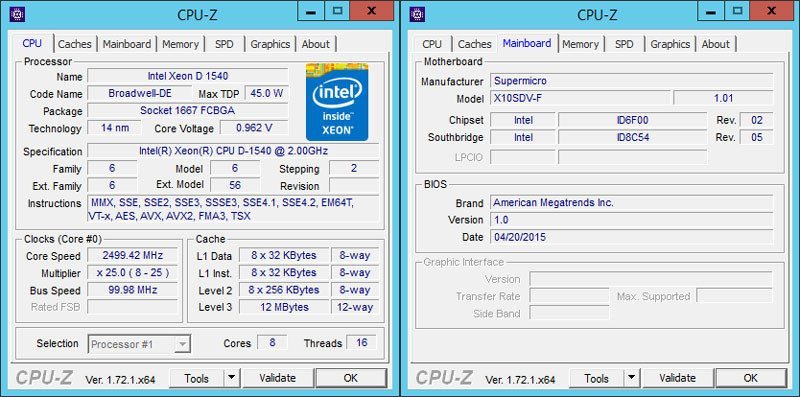Supermicro X10SDV-F Xeon D-1540 SoC Motherboard Review
Bohs Hansen / 9 years ago
A Closer Look & Layout Analysis
The Supermicro X10SDV-F packs a lot of features on a very small footprint, yet it all looks very organized and most parts are right where you’d expect them to be. With a motherboard this small, we can almost spot all the details from a single shot like the one below, but I’ll still be showing you all of the details and some close-up shots below.
The first thing we spot is the heatsink on top of the Intel Xeon D-1540 SoC and the four DDR4 DIMM slots. The CPU has a TDP of just 45W, a core clock speed of 2.0-2.6GHz, and 12MB Cache for its eight cores and 16 threads. The four DDR4 DIMM slots support up to 128GB DDR4 ECC RDIMM or up to 64GB DDR4 ECC/non-ECC UDIMM with a speed of 1600Mhz, 1866MHz, and 2133MHz. That means you can use modules up to 32GB each.
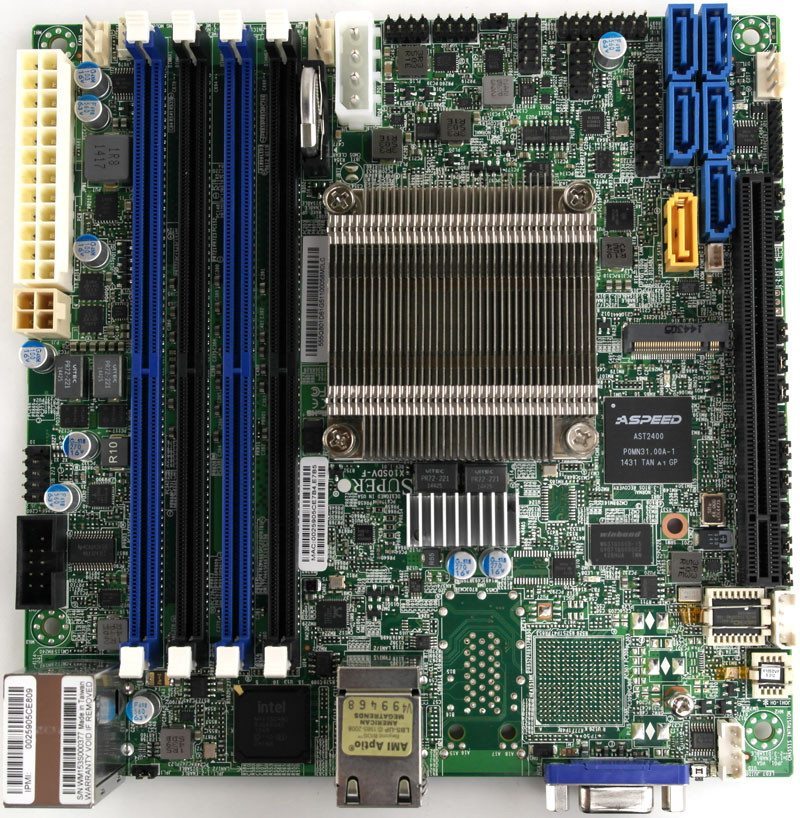
The rear side of the PCB is very plain and holds the heatsink retention plate, but also a few minor chips and resistors that couldn’t find a place on the top. Nothing sticks far out and nothing should interfere with your chassis in that regards.
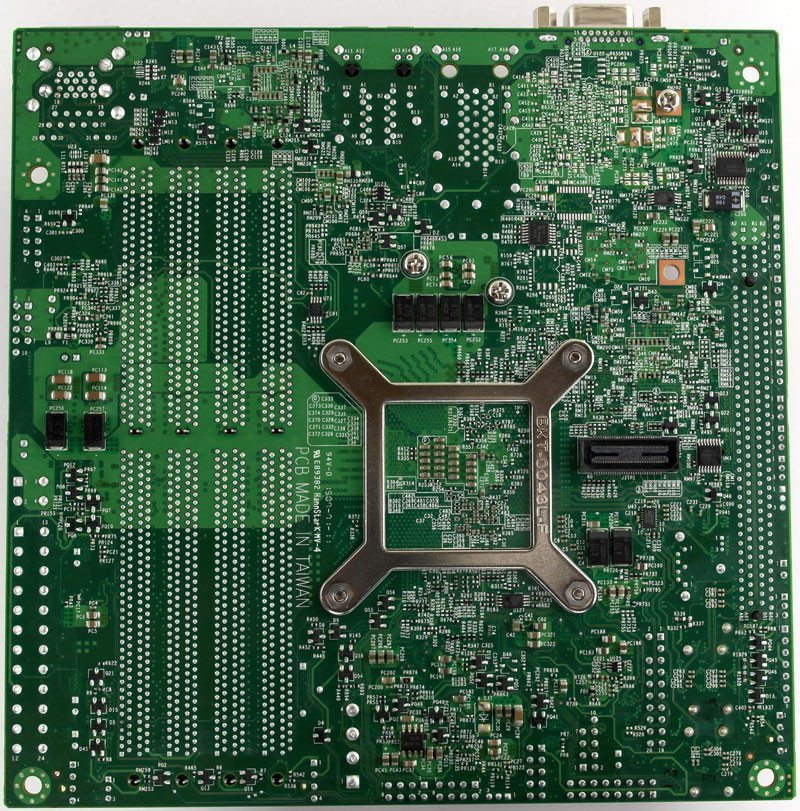
The rear I/O is kept very minimal and there aren’t many options here as seen on some other larger boards. To the left are the two only input ports in the form of USB 3.0 and on top of them is the dedicated IPMI RJ45 port. In the middle, we see the two Gigabit Ethernet ports powered by Intel’s i350-AM2 chip and we can also see where the two 10 Gbps ports would be on the bigger brother board. Finally to the right is the D-Sub VGA port for maintenance that supports up to 1920 x 1200 pixel resolutions. Hardly even noticeable is the Unit Identifier (UID) button and it sits directly to the right of the VGA port.

The Aspeed AST2400 is a great solution for motherboards like this. It comes with its own RAM package and allows the video use of CPUs without iGPU and without the need to take up a PCIe slot just for a graphics card.
The M.2 PCIe 3.0 x4 slot is located right above the AST2400 chip and it supports both 2242 and 2280 NGFF modules. The PCI Express slot is a full speed Gen3 x16 slot, so you can get the best performance out of your add-on cards.
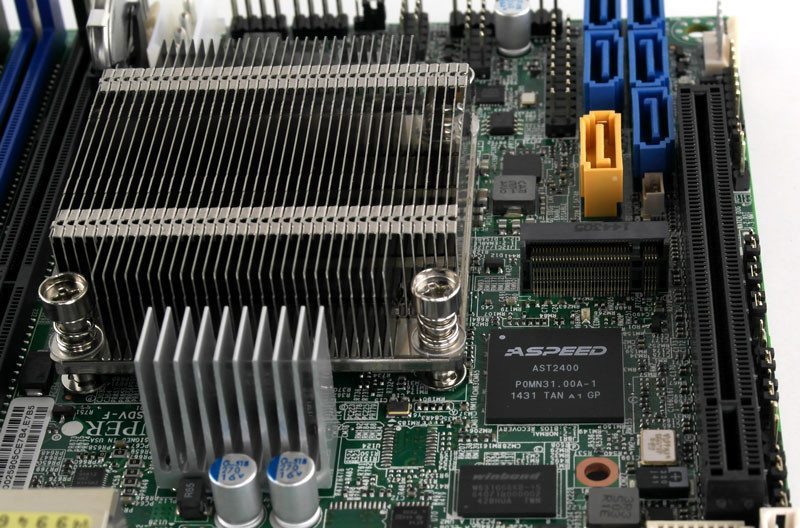
Here is a shot of the PCIe slot from above where we also see the BIOS chip to the right and SATA ports to the right. All the way at the bottom is where most jumpers are located and they might be tricky to access if you have an add-on card installed – so make sure to set them how you want them first, before installing any add-on cards.

The Supermicro X10SDV-F also supports SATA DOM modules and it is the yellow port that is intended for this. Below it there is a small DOM power port for direct power without the need for Molex adapters and similar. We can also see one of the FAN headers and the M.2 slot from behind.
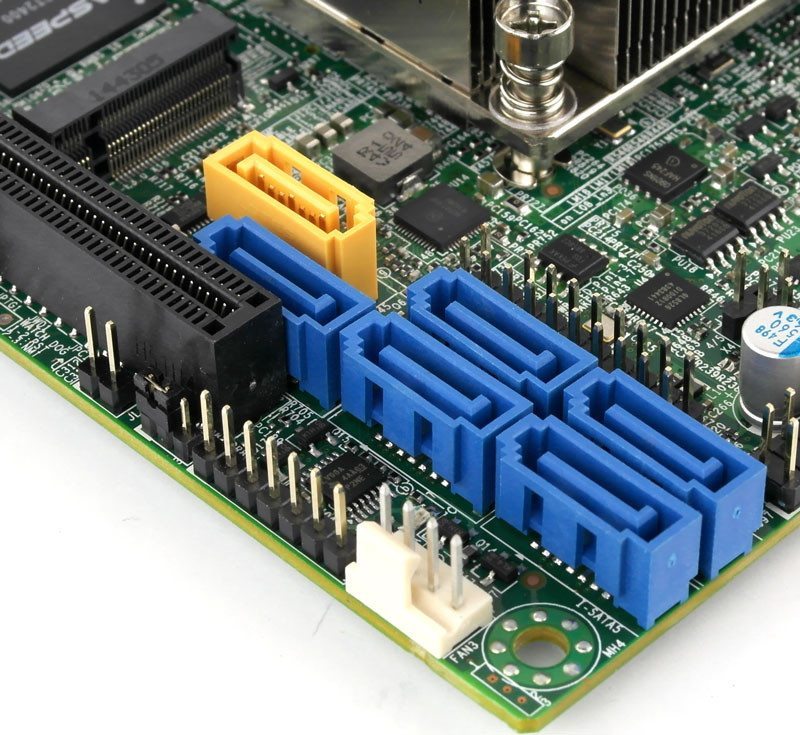
We find all of the power connectors at the top inner corner of the motherboard. At first glance, they might look like too many but that is because the X10SDV-F can get its power from both a 24-pin ATX power connector as well as from a 12V power source.
The nature of Mini-ITX motherboards mean that everything has to be small and that even goes for the hooks on the memory slots, they’re very slim. They still work great and it isn’t like you’re going to switch memory every day anyway. On either side of the RAM slots, you’ll find the last two FAN headers and this is also where the BIOS battery is placed.
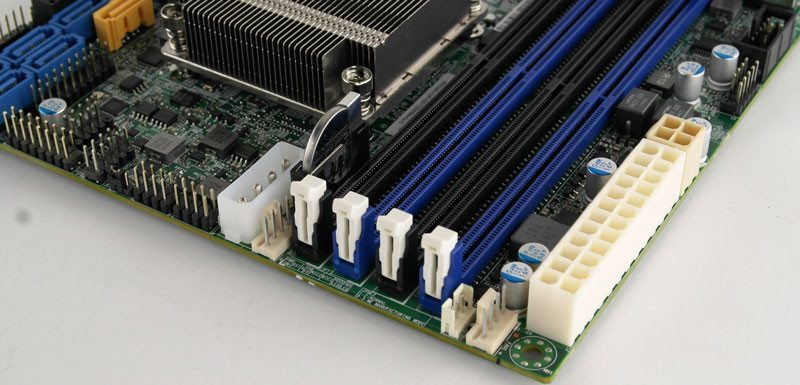
There are three LAN ports on this motherboard and the two main ports are controlled by the Intel i350-AM2 controller.
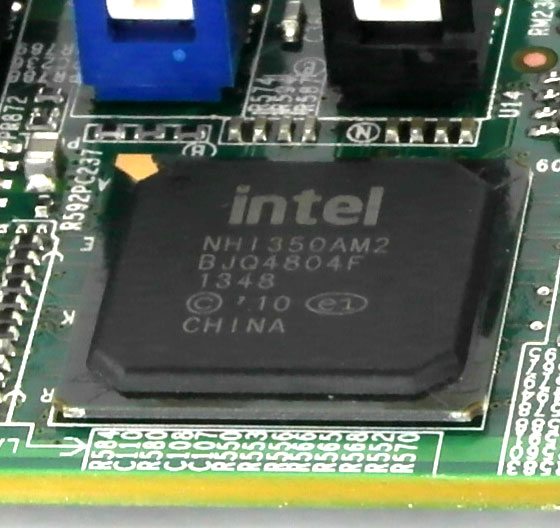
The third port is controlled by Realtek’s RTL8211E and is dedicated to the IPMI remote control management.
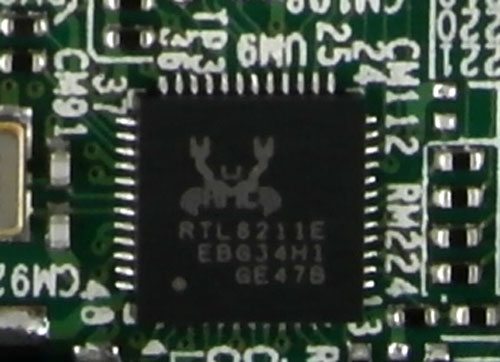
It is great that we also find two USB 2.0 headers for a total of 4 ports or devices as this motherboard only has two USB 3.0 ports on the rear and no other input ports. Supermicro really did a great job at getting everything on to this tiny motherboard and make it great when it comes to functionality. IPMI 2.0 management with KVM and dedicated LAN, TPM, and SuperDOM support as well as General Purpose I/O Expander Header, two Serial Link General Purpose I/O Headers, amd a NVMe I2C Header. It’s all there.
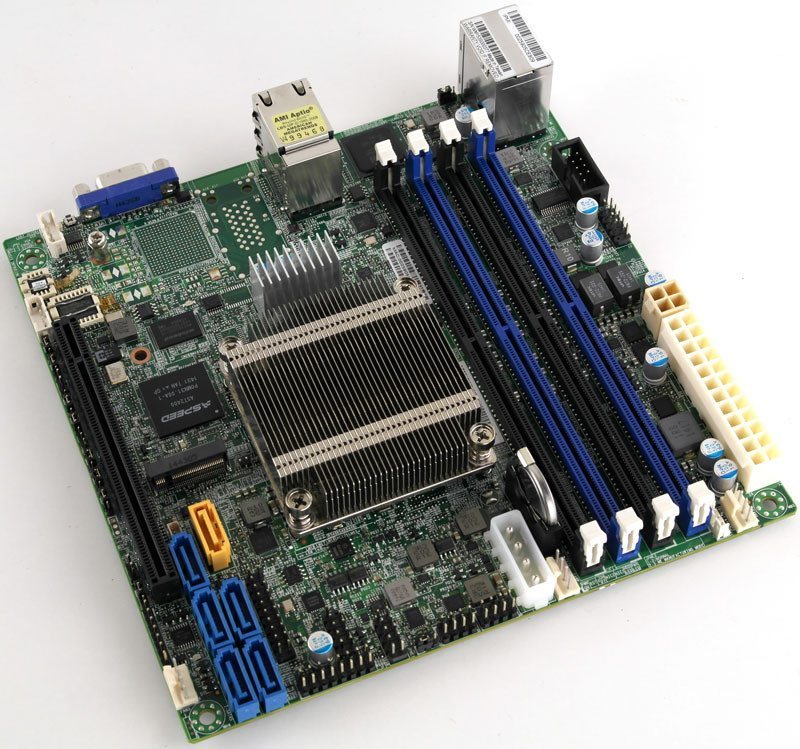
CPU-Z isn’t always the most reliable on server boards, it simply doesn’t have the information stored about them. This time however it looks very accurate.
